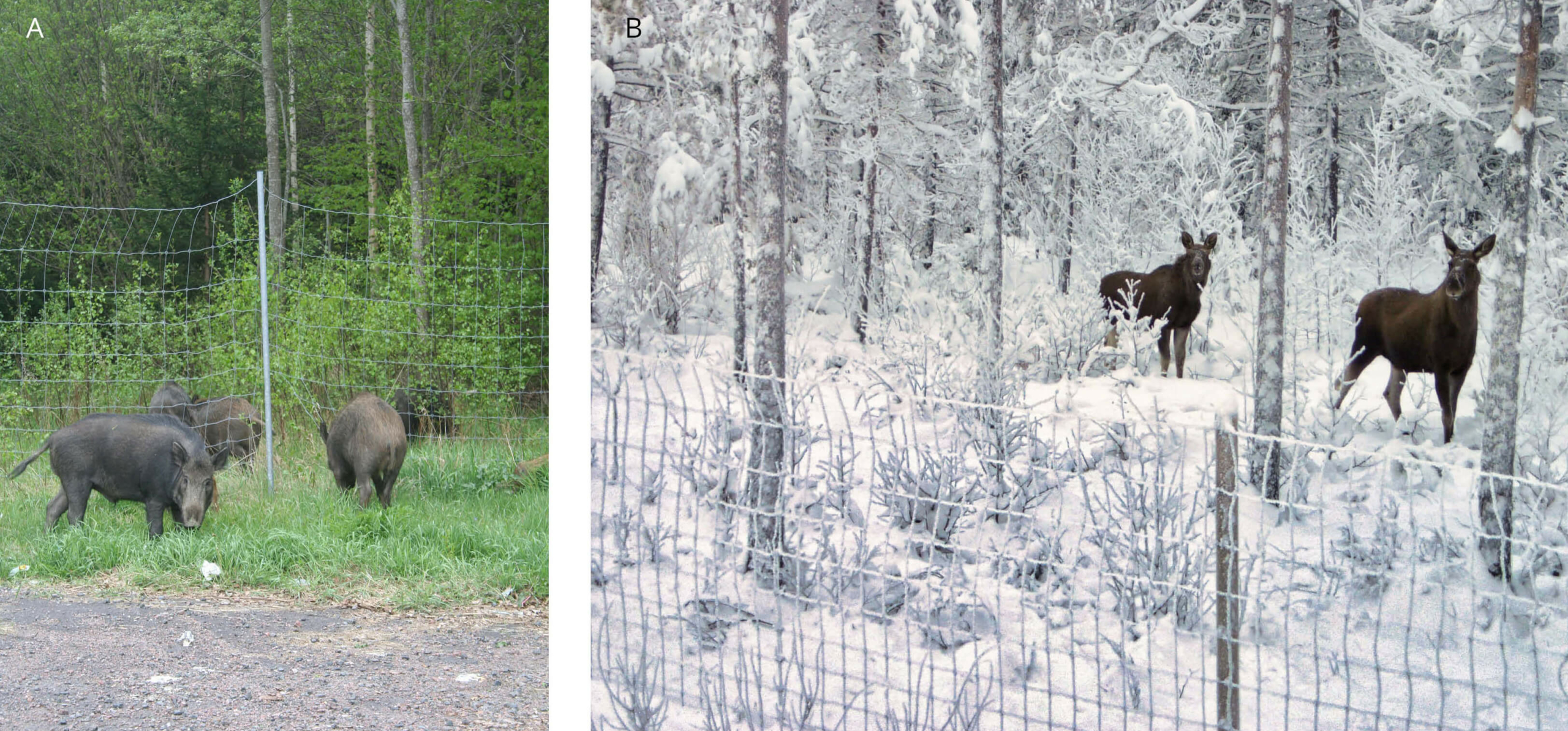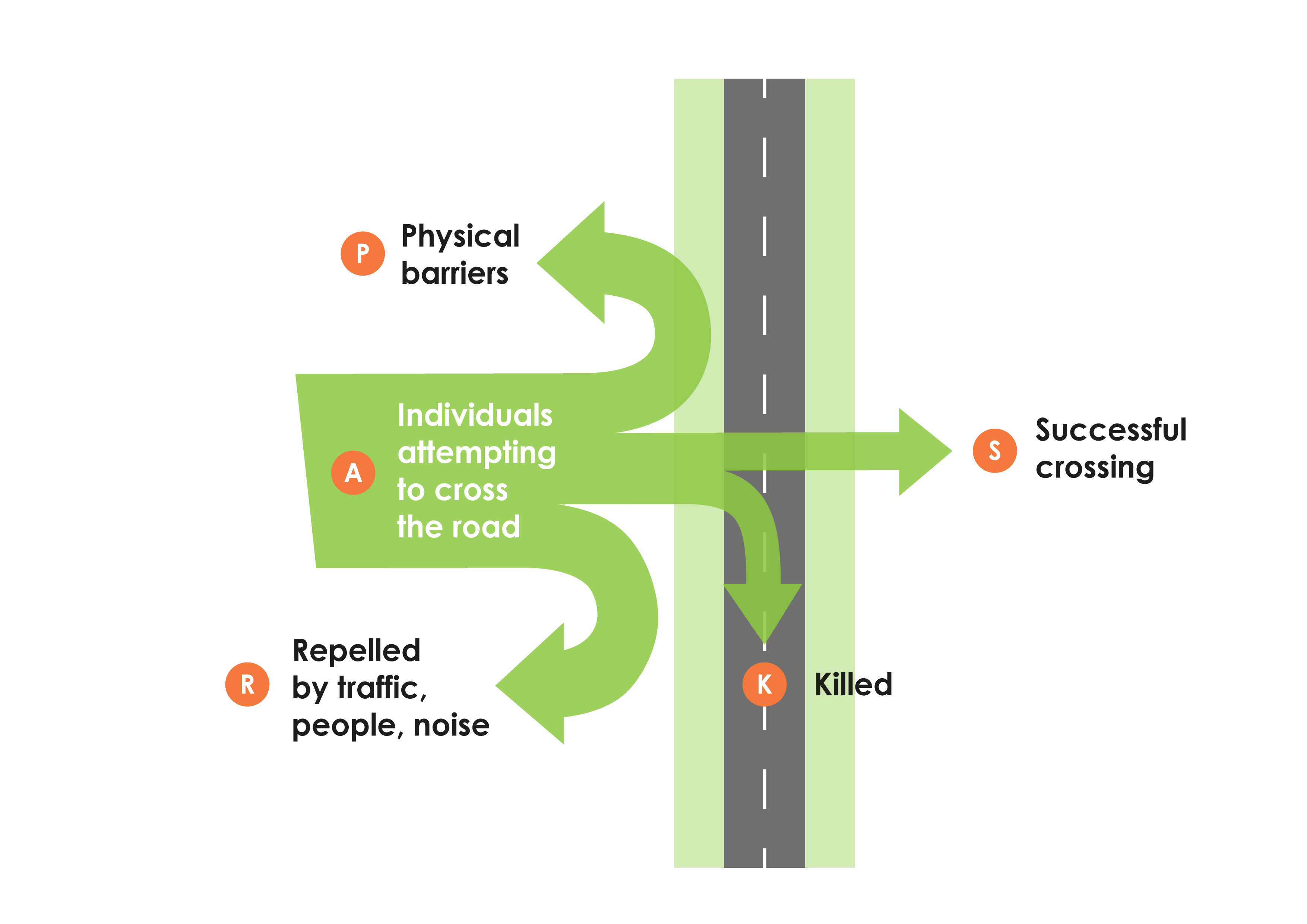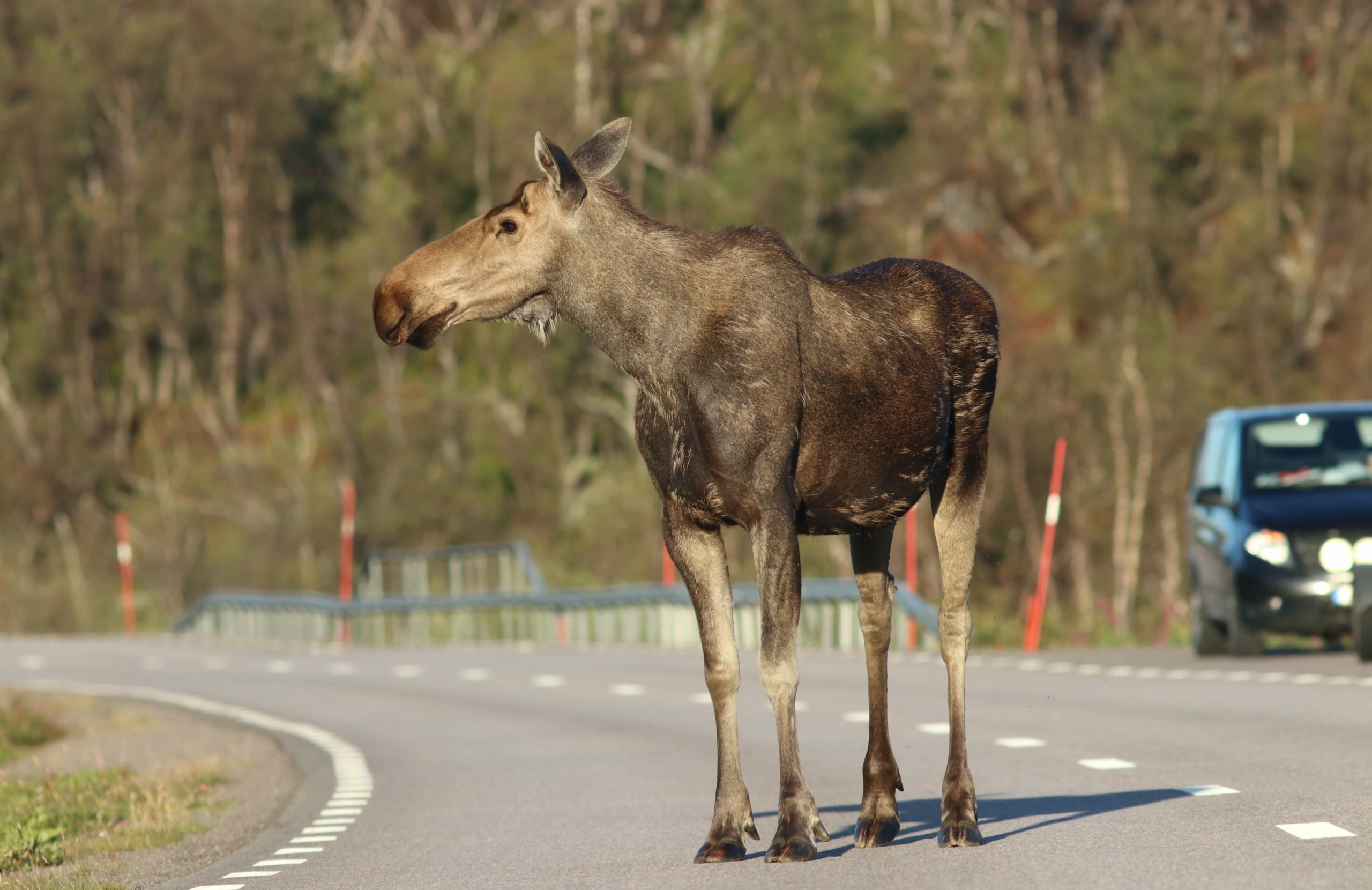Linear infrastructures such as roads and railways create movement barriers for most terrestrial wildlife. These barriers can be physical, e.g., infrastructure surfaces and fences, or behavioural, caused by noise, light and other disturbances that repel animals. The impact of these barriers varies between species, but generally they result in reduced access to resources and habitats, increased mortality, and isolation of populations with consequent risks for declines and extinctions. The barrier effect is perhaps the most prominent and recognised impact of transport on biodiversity because it is so specific to the sector and because it is the sector’s main contribution to habitat fragmentation. However, it can be mitigated through measures that benefit both wildlife and humans. Mitigation must consider both the barrier and mortality effects in a ‘barriers (fences) and crossings (wildlife passages)’ approach that separates wildlife from traffic while maintaining mobility.
Moreover, the barrier effects of different infrastructure links interact and accumulate, fragmenting natural habitats into smaller isolated areas unable to support viable populations. Mitigating the barrier effect at strategic locations along ecological corridors is essential for ensuring the survival of wildlife populations in Europe’s fragmented landscapes.
Species specific effects
The barrier effect can be conceptualised as a function of three main probabilities that influence whether an animal successfully crosses an infrastructure barrier (Figure 1.3.7):
- Animals approaching the barrier may be physically stalled by fences, screens, changes in habitat or substrate.
- Some animals may be repelled by traffic noise, vehicle movement, light or human activities.
- Those animals who continue to enter the carriageway risk getting killed by traffic, resulting in only a few individuals who successfully manage to cross the barrier.
These probabilities will vary considerably among species and infrastructures. For instance, slow moving species such as turtles, snakes, and other reptiles that may bask on a paved road surface may be especially vulnerable to traffic mortality. Other species such as small mammals may avoid the barrier due to noise and vibrations and refrain from entering the open and exposed road corridor. Large carnivores may be deterred by infrastructure and avoid crossing due to human activities.
Those species that are not repelled or obstructed in their approach of the road or railway may still respond to traffic in different ways and hence experience very different barrier effects (Figure 1.3.6). Some species may be fenced off from infrastructure altogether (Figure 1.3.8) or refrain from entering the roadway when a vehicle approaches or traffic volume is high but have no problem crossing a large motorway when traffic allows (Figure 1.3.9). Other species may freeze, hide, or fight when encountering an approaching vehicle, resulting in a mortality, despite lower traffic volumes. Both groups of species will likely experience a rapidly increasing barrier effect with increased traffic, but for different reasons.

Not all roads and railroads are absolute barriers, and some animals eventually find ways to cross under or over even the busiest transport corridors. Yet, there is ample evidence for the cumulative and long-lasting effects on populations leading to demographic isolation, inbreeding, genetic divergence, and local extinctions in both rare and common species. Some species are particularly vulnerable to the barrier effect. Common characteristics of these species include:
- large home ranges (relative to the mesh-size of the infrastructure network, e.g., large carnivores), that require extensive habitat to maintain viable populations, are particularly sensitive to infrastructure barriers as the effects accumulate within each individual’s range.
- Migratory behaviour: migratory species that require specific movement corridors, or that regularly move between seasonal habitats, are more likely to be impacted by infrastructure barriers as they may alter the animals’ routes or access to resting or temporary feeding grounds.
- Limited mobility: species with limited mobility, such as those that are flightless or have restricted dispersal abilities, may be unable to move across or around infrastructure barriers, leading to reduced gene flow and increased isolation.
- Habitat specificity: species that have highly specific habitat requirements, or that are limited to certain habitat types, are often highly vulnerable to the impacts of habitat fragmentation especially as they often also are limited in their mobility.
- Low reproductive rates: species with low reproductive rates are often more vulnerable to habitat fragmentation caused by infrastructure because they are less able to rebound from population declines.
- Specific life-history traits: species with specific life-history traits such as long lifespans, low reproductive rates or delayed maturation may be more susceptible to the effects of habitat fragmentation caused by infrastructure because of the increased time and resources required to recover from population declines.
- Threatened or endangered status: species that are already threatened or endangered due to other factors such as habitat loss or overexploitation are more likely to be impacted by the barrier effect of infrastructure.
Understanding these characteristics of wildlife will help inform decisions about how to design and where to implement appropriate mitigation.
Traffic and barrier effects
Several factors contribute to creating a barrier effect on wildlife. Traffic volume, vehicle speed, number of lanes or tracks, infrastructure width and safety facilities such as median barriers, side-rails and fences, noise absorbing walls, street illumination, road surface and gravel sizes in rail embankments – all may influence wildlife behaviour and mobility. Many of these factors are also strongly related to safety standards designed for a road or railway with certain traffic volumes and speed limits.
As described above (Figure 1.3.6), the relationship between traffic and barrier effect is non-linear and results from a combination of mortality and avoidance responses and is thus highly species specific. For practical purposes, however, four levels of permeability may be distinguished according to the intensity of traffic per day (Table 1.1). Small infrastructure with sparse traffic may rarely impose a barrier problem, at least to larger animals. Busy motorways and railways with multiple tracks will however be nearly impermeable for both small and large animals. The impact of intermediate infrastructure is more complex as both barrier and mortality effects must be balanced. Whether mitigation efforts should focus on preventing traffic mortality through e.g., fencing while accepting increased barrier effects or allowing free passage while accepting a certain level of mortality, or employing alternative solutions or combinations of fences and bridges, needs to be balanced against the consequences to wildlife populations and traffic safety.
Table 1.1 – The relationship between road and rail traffic density and the risk for mortality and barrier effects on mammals. Mitigation needs may differ between minor and major infrastructure as well as between species. Updated from the Wildlife and Traffic handbook (Iuell et al., 2003), data based on empirical data from Sweden.
| Traffic intensity (approximate ranges) | Effect on permeability | Mitigation approach | |
| Road | Railway | ||
| < 1,000 vehicles per day | < 100 trains per day | High permeability for most mammalian species, but smaller species may still experience mortality and barrier effect | Mitigation may not be required for larger wildlife, but smaller species may need special solutions |
| 1,000 – 4,000 vehicles per day | 100 – 200 trains per day | Reduced permeability for most species, increased mortality | Focus on accident prevention, smaller species may need special solutions |
| 4,000 – 10,000 vehicles per day | 200 – 400 trains per day | Limited permeability for most species, high death risks | Mitigation must balance barrier and mortality effects |
| > 10,000 vehicles per day or fenced | > 400 trains per day or fenced | No permeability for most species, very high death risk | Focus on providing safe passages, fully separate wildlife and traffic |
Mitigating barrier effects
Two main strategies can be applied for mitigating barrier effects of infrastructure and traffic: temporal or spatial separation of animal and vehicle movements.
- Temporal separation involves measures such as temporary road closure, speed reduction, driver warning and animal deterrence.
- Spatial separation involves structures such as overpasses and underpasses for wildlife, which can be specific for wildlife or multiuse (see Chapter 5 – Solutions to mitigate impacts and benefit nature). These structures can be combined with fences that guide animals towards safe crossing facilities.
However, there may be situations where neither temporal nor spatial separation is feasible or appropriate. In such cases, alternative solutions such as adapting traffic flow or rerouting infrastructure may be necessary.
Another challenge is to determine the appropriate level of mitigation. How strong a barrier effect can a species or population or ecosystem tolerate? How much permeability of road and railway barriers for wildlife is required, and where? The answer may depend on several factors, such as the abundance and distribution of wildlife, the importance of connectivity for population viability and genetic diversity, the location and function of ecological corridors, and the diversity of species and habitats affected by the barrier. In areas with high animal abundances, many safe wildlife passages may be needed to reduce barrier effects and mortality. In areas that are scarcely populated or rarely trespassed by wildlife, fewer crossing facilities may suffice. However, in less populated areas, connectivity may be more crucial to maintain the viability and genetic diversity of the small remaining populations. Therefore, the location and function of ecological corridors must be considered when planning wildlife passages. Where transport infrastructure intersects with ecological corridors, mitigation measures may need to provide higher permeability than compared to where the infrastructure passes through the less suitable landscape matrix. In addition, if mitigation shall allow for the movement of a greater variety of species, passages must be large and structurally diverse enough to provide suitable conditions for their movements. Whether a single large or several small passages are best suited to provide the required permeability depends on the specific characteristics of the target species and the surrounding landscape (see Chapter 5 – Solutions to mitigate impacts and benefit nature).

